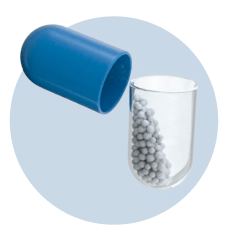- Vitamins & Supplements
- Multivitamins
- TestUdpTemporary
- Vitamins A-Z
- Mineral Supplements
- Multivitamins for Age 50+
- banner
- test 98
- Nutritional Drinks
- Adult Daily Nutrition
- Kids Nutrition (2-15 Yrs)
- For Women
- Top Deals in Supplements
- Health Food & Drinks
- Green Tea & Herbal Tea
- Herbal Juice
- Apple Cider Vinegar
- Healthy Snacks
- Protein Supplements
- Whey Protein
- Amino Acids
- Mass Gainers for testing purpose testing
- Workout Essential
- Fat Burners
Obramin Eye Drop
Product introduction
Obramin Eye Drop stops the growth of bacteria and thereby helps to cure the underlying infection. Follow your doctor’s instructions precisely for administering this medicine. Wait for at least 5 minutes before applying any other eye medication. It should be used regularly at evenly spaced time intervals as prescribed by your doctor. Do not skip any doses and finish the full course of treatment even if you feel better. Stopping the medicine too early may lead to the infection returning or worsening.
Obramin Eye Drop will not work for eye infections that are not caused by bacteria (e.g., viral) and therefore, should only be used if prescribed by your doctor. Unnecessary use of any antibiotic can lead to a decrease in its effectiveness in the future.
Common side effects seen with this medicine include temporary eye irritation, burning sensation, itching, and redness after administration. Consult your doctor if these side effects persist or if your condition worsens. It may cause some short-term blurring of vision when first used. Therefore, do not drive immediately after administering this medicine. Contact lenses should not be worn while you are using this medicine or while you have an active eye infection.
Uses of Obramin Ophthalmic Solution
- Treatment of Bacterial eye infections
Benefits of Obramin Ophthalmic Solution
In Treatment of Bacterial eye infections
Side effects of Obramin Ophthalmic Solution
Common side effects of Obramin
- Burning sensation
- Eye redness
- Eye itching
- Eye irritation
How to use Obramin Ophthalmic Solution
How Obramin Ophthalmic Solution works
Safety advice
What if you forget to take Obramin Ophthalmic Solution?
All substitutes
Quick tips
- Your doctor has prescribed Obramin Eye Drop to treat bacterial infections of the eye.
- Do not skip any doses and finish the full course of treatment even if you feel better.
- Obramin Eye Drop may cause damage to cornea on long-term use.
- Apply pressure on the corner of the eye (close to the nose) for about 1 minute immediately after instilling the drop.
- Wait for at least 5-10 minutes before delivering the next medication in the same eye to avoid dilution.
- Stinging sensation may occur for 1-2 mins. Notify your doctor if it persists for longer.
- Obramin Eye Drop may cause damage to cornea on long-term use.
- Make sure to use it within 4 weeks of opening the bottle.
Fact Box
FAQs
What bacteria does Obramin Eye Drop kill?
How long should you use Obramin Eye Drop?
How should Obramin Eye Drop be used?
What if I don't get better after using Obramin Eye Drop?
Can I stop using Obramin Eye Drop when I feel better?
Disclaimer:
Tata 1mg's sole intention is to ensure that its consumers get information that is expert-reviewed, accurate and trustworthy. However, the information contained herein should NOT be used as a substitute for the advice of a qualified physician. The information provided here is for informational purposes only. This may not cover everything about particular health conditions, lab tests, medicines, all possible side effects, drug interactions, warnings, alerts, etc. Please consult your doctor and discuss all your queries related to any disease or medicine. We intend to support, not replace, the doctor-patient relationship.References
- MacDougall C, Chambers HF. Aminoglycosides. In: Brunton LL, Chabner BA, Knollmann BC, editors. Goodman & Gilman’s: The Pharmacological Basis of Therapeutics. 12th ed. New York, New York: McGraw-Hill Medical; 2011. p. 1516.
- Chambers HF, Deck DH. Aminoglycosides & Spectinomycin. In: Katzung BG, Masters SB, Trevor AJ, editors. Basic and Clinical Pharmacology. 11th ed. New Delhi, India: Tata McGraw Hill Education Private Limited; 2009. p. 812.
- Briggs GG, Freeman RK, editors. A Reference Guide to Fetal and Neonatal Risk: Drugs in Pregnancy and Lactation. 10th ed. Philadelphia, PA: Wolters Kluwer Health; 2015. pp. 1371-72.
Marketer details
The list of available options shown with the same composition has been prepared upon the advice of registered medical practitioners, pharmacists affiliated with TATA 1MG. TATA 1MG does not promote any pharmaceutical product of any particular company, and all recommendations are based on the medical opinion, advisories from specialist medical and pharmaceutical professionals.
Lab tests offered by us













